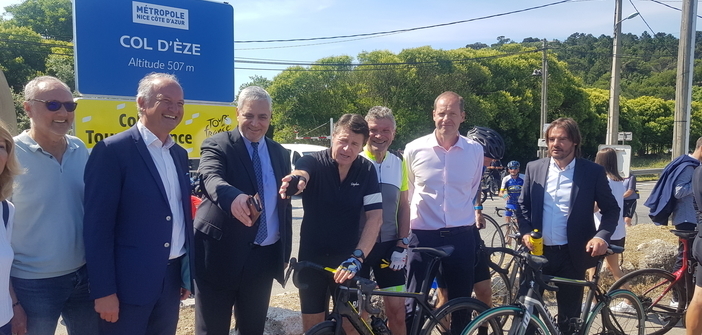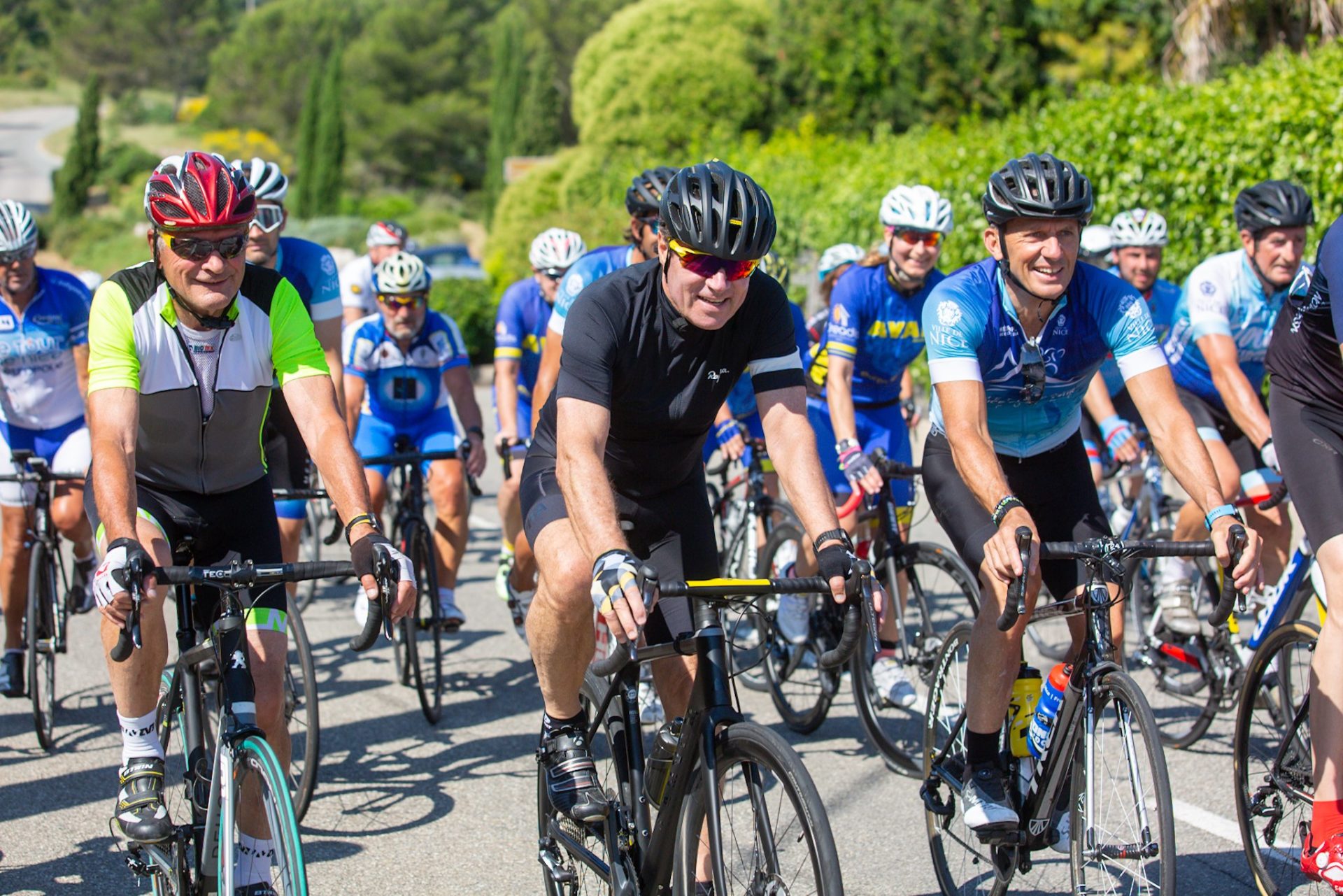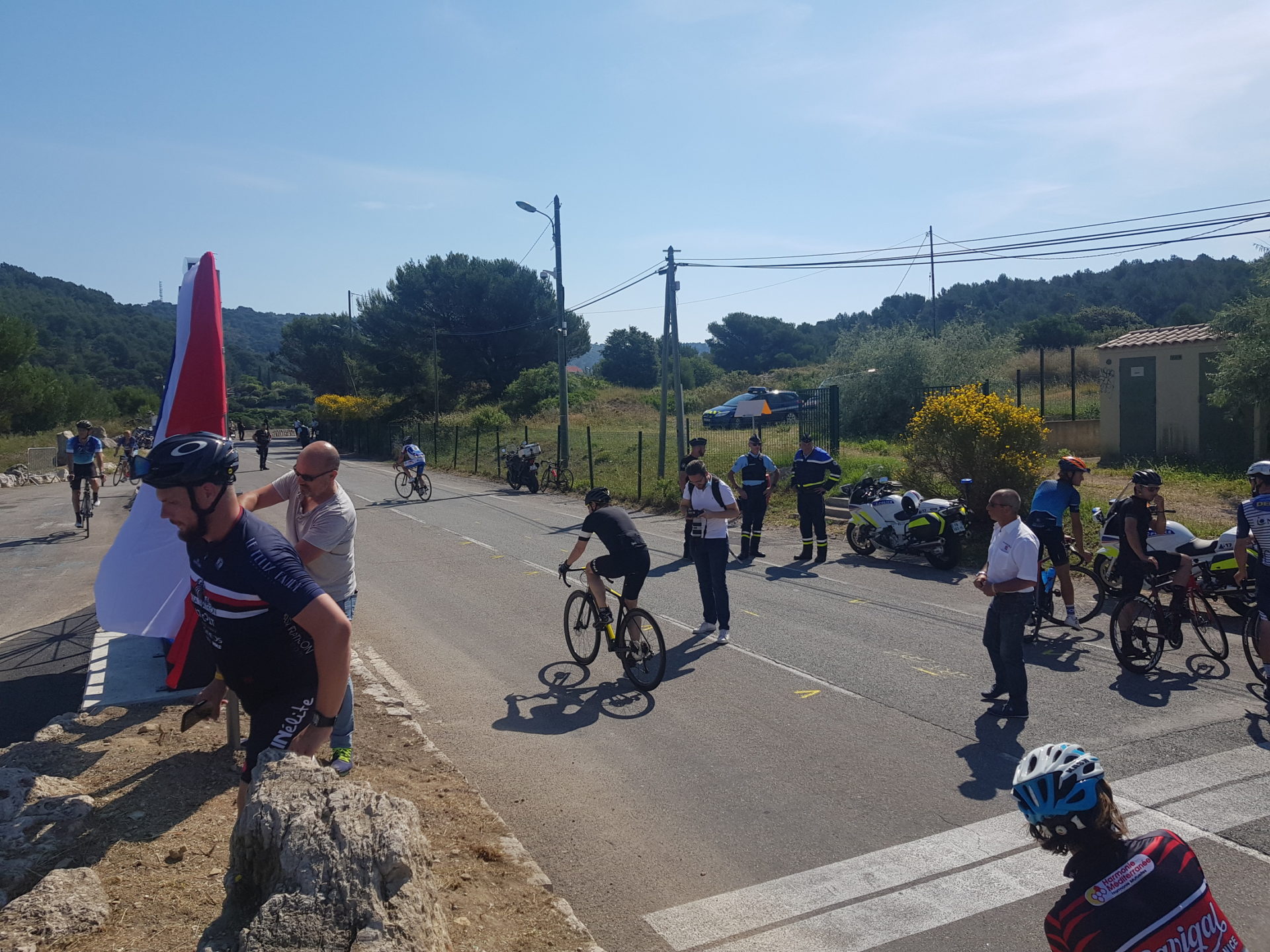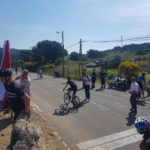The Tour de France will start this year from Nice in a special edition. Yesterday, Mayor Christian Estrosi climbed the Col d’Eze alongside 50 cyclists, meeting Tour director Christian Prudhomme at the summit, to mark the occasion a little over two months before the grand departure in the city on the French Riviera.
For the second time in its history after 1981, Nice will host the grand start of the Tour de France this year. This 107th edition is already historic: it is the first time in over a century that the Tour will begin in August (the 29th) and end on the Champs-Élysées on September 20th. The coronavirus crisis long cast doubt on whether it would be held, possibly postponed or outright canceled: in the end, sports came out on top: the most popular cycling race in the world will indeed take place this year. Nice will have the honor of organizing no less than 3 stages, including the climb of the Col d’Eze. An ascent that the Mayor of Nice “inaugurated” alongside about fifty cyclists 63 days before the start: the countdown is on…
The Col d’Eze, a legendary climb
“The Col d’Eze is legendary, especially on the Paris-Nice race. Raymond Poulidor and Eddy Merckx have triumphed at its summit,” began Tour director Christian Prudhomme in his speech alongside the mayor of Nice and Bernard Thévenet (winner of the 1975 and 1977 editions, after the arrival of the latter two at the summit). “Thanks to everyone’s dedication, the service of the State, the city of Nice and its mayor who never blinked, the Tour de France found a place on the sports agenda, a place that does not leave the cycling world indifferent,” continued the former journalist and current director of the Tour. “Bernard (Thévenet) wrote cycling history right here, during the ascent of this Col d’Eze, where he dethroned the greatest champion in history, none other than Eddy Merckx, during the stage connecting Nice to Pra Loup in the 1975 edition. It is said that he had a secret: he trained the day before on a pedal boat with Jean-Pierre Danguillaume, that’s certainly what made the difference,” he jovially concludes.
An event with extraordinary visibility
The decision to postpone and possibly hold it behind closed doors initially caused much debate. This hypothesis did not hold for long. It must be said that a Tour without spectators would have left a bitter taste on an edition that would quickly be forgotten. Because the Tour de France is a unique echo chamber. 190 countries broadcast this event, including 60 channels live. 2500 journalists are mobilized for over 3 billion viewers worldwide as well as 12 million spectators along the roads. It’s not only French cycling that’s saved by this decision, but more importantly also international cycling and hundreds of jobs.
A matter of survival
The director of the Tour himself is well aware of the significance of such a decision. He confides: “The entire cycling world insisted on the fact that the Tour de France is the biggest cycling event in the world; it’s the cornerstone. The atmosphere was very constructive in the various meetings, and each federation and association put everything in place to make this edition happen,” says the former president of the National Cycling League, Christian Prudhomme. The riders themselves were also, above all, waiting for several decisive decisions regarding their professional season. As the director of the Tour explains, three decisive dates slipped into the riders’ schedules: “on the one hand, Wednesday, April 15, with the announcement of the Tour’s new dates; on the other hand, when they could finally train on the road (the date varied according to countries, for France it was May 11); and finally, when the complete calendar was revealed (early June),” he explains. And what about French hopes in this edition? “I dare not comment, but I truly hope they have as much talent as they did last year,” he concludes with a smile.
*Alaphilippe in yellow for 14 days and two stage victories
Thibaut Pinot winner of the Tourmalet
Romain Bardet polka dot jersey for best climber








